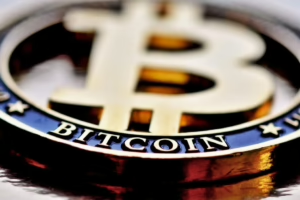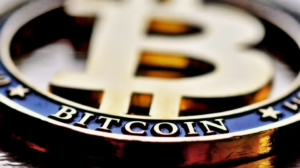The Silent Struggle: Stories of Prejudice from Marginalized Communities
Introduction
Prejudice, often rooted in ignorance and fear, manifests in myriad forms, affecting various marginalized communities worldwide. This article aims to illuminate the silent struggles faced by these communities, showcasing personal narratives that emphasize the lived experiences of individuals who confront bias, discrimination, and systemic inequality daily. By weaving together stories of resilience and resistance, we can foster a deeper understanding of the societal changes needed to combat prejudice and create a more equitable world.
Understanding Marginalized Communities
Marginalized communities refer to groups that experience social, economic, and political disadvantages. These can include but are not limited to racial and ethnic minorities, LGBTQ+ individuals, people with disabilities, immigrants, and the economically disadvantaged. The intersectionality of these identities often exacerbates experiences of discrimination, making it essential to understand the unique challenges faced by individuals within these communities.
Historical Context
To comprehend the current landscape of prejudice, we must first delve into historical contexts that have shaped it. Many marginalized communities bear the scars of colonialism, slavery, and systemic oppression. For instance, the legacy of slavery in the United States continues to affect African American communities through systemic racism, economic disparities, and social stigmas. Similarly, the Indigenous peoples of various nations have faced centuries of displacement and cultural genocide, leading to profound psychological and sociocultural impacts.
Personal Stories of Prejudice
Case Study: African American Experience
Jamal’s Story: A Journey from Stereotypes to Self-Actualization
Jamal, a 28-year-old African American man from Atlanta, shares his journey through prejudice. Growing up in a predominantly white neighborhood, he faced unrelenting stereotypes that colored others’ perceptions of him. Despite excelling academically and athletically, Jamal frequently encountered assumptions about his character and capabilities based solely on the color of his skin.
“I remember being followed in stores or being asked if I was on the basketball team just because I was Black,” he recalls. “These experiences shaped my understanding of how others viewed me, often as a threat rather than an individual with dreams and aspirations.”
Through mentorship programs focused on empowering young Black men, Jamal discovered a sense of community. “It was liberating to connect with others who shared similar experiences and to discuss how to counteract these prejudices,” he explains, highlighting the importance of solidarity and support.
Case Study: LGBTQ+ Experience
Sophia’s Story: Navigating Identity and Acceptance
Sophia, a 22-year-old transgender woman, recounts her transition and the societal challenges that accompanied it. “Coming out was terrifying,” she admits. “I faced rejection from friends and family who couldn’t accept me for who I am.”
In school, Sophia was often subjected to bullying and derogatory language, reinforcing societal norms that marginalize transgender identities. She describes a moment when a classmate hurled insults during a school assembly, causing her to feel invisible and ashamed. “It was heartbreaking. I wanted to scream but instead, I faded into the background. It felt like no one understood my pain.”
Despite these challenges, Sophia found solace in community organizations that support LGBTQ+ youth. “I learned that my identity is valid and beautiful, and I found my voice through art and advocacy,” she shares, illustrating the resilience that emerges from shared struggles.
Case Study: Immigration and Racial Prejudice
Ravi’s Story: The Weight of Belonging
Ravi, an immigrant from India, moved to the United States seeking a better life. However, upon his arrival, he was met with rampant xenophobia. “I faced countless questions about my visa status and assumptions about my intentions,” he recalls. “People thought I was stealing jobs or taking advantage of the system. It hurt to be labeled so unfairly.”
Ravi’s experience reflects broader societal attitudes towards immigrants, often characterized by scapegoating and racial profiling. He recalls an incident at work where a colleague openly expressed disdain for immigrants, prompting Ravi to feel isolated and unwelcome in his workplace. “In that moment, I felt like an outsider in a country I had hoped would be my home.”
Despite feeling the weight of prejudice, Ravi found a sense of belonging in community groups that advocate for immigrant rights. “Education is key,” he asserts, emphasizing the importance of breaking down stereotypes through dialogue and understanding.
The Systematic Roots of Prejudice
Prejudice does not exist in a vacuum; it is often perpetuated by societal structures and institutions. From education to healthcare, the impacts of bias are profound and pervasive, creating environments that marginalize rather than uplift.
Education Inequities
In many regions, educational institutions reflect and reinforce societal prejudices. Marginalized students often attend underfunded schools with fewer resources, resulting in lower academic performance and diminished opportunities. A report from the National Center for Education Statistics indicates significant disparities in educational attainment between racial and ethnic minorities and their white counterparts, perpetuating cycles of disadvantage.
Healthcare Disparities
Healthcare access is another arena where prejudice significantly impacts marginalized communities. Studies reveal that racial and ethnic minorities experience higher rates of chronic illnesses and have less access to quality care. According to the American Psychological Association, systemic racism leads to distrust in healthcare systems, exacerbating health disparities. For instance, African Americans are less likely to receive pain management treatments compared to their white counterparts, stemming from stereotypes that inaccurately portray Black individuals as less sensitive to pain.
Employment Discrimination
Employment discrimination is a pervasive issue that affects marginalized communities disproportionately. Research shows that applicants with “ethnic-sounding” names receive fewer callbacks for interviews compared to those with traditionally “white” names, regardless of qualifications. This bias reinforces economic instability within marginalized communities, perpetuating cycles of poverty and limiting socioeconomic mobility.
The Role of Intersectionality
Understanding the experiences of marginalized communities requires examining the concept of intersectionality, introduced by Kimberlé Crenshaw. Intersectionality posits that individuals may face overlapping forms of discrimination based on race, gender, sexuality, and other identities. For instance, a Black transgender woman may experience unique challenges that differ from those faced by either Black cisgender women or white transgender women.
Case Study: Intersection of Race and Gender
Maria’s Story: Navigating Multiple Identities
Maria, a Latina woman, illustrates the complexities of intersectionality in her daily life. Growing up in a household where machismo was prevalent, Maria often felt pressured to conform to traditional gender roles. “I was told to be quiet and obedient, but that never felt like me,” she explains.
As Maria began to assert herself academically and professionally, she faced backlash not only for her gender but also for her race. “I remember going into interviews and feeling like I had to work twice as hard to prove myself,” she shares, referencing microaggressions that belittled her accomplishments. The challenges she faced highlighted the compounded nature of discrimination, emphasizing the need for nuanced understanding and advocacy.
Resilience and Resistance
Despite the prevalence of prejudice, marginalized communities demonstrate remarkable resilience and resistance. Personal narratives often reflect a dual journey of overcoming adversity while advocating for change within society.
Activism and Advocacy
Activism serves as a powerful tool for marginalized populations to confront systemic inequalities. Organizations such as Black Lives Matter and LGBTQ+ rights groups have galvanized public awareness and sparked conversations on intersectionality and justice. Through protests, social media campaigns, and community organizing, individuals have reclaimed narratives and demanded accountability from systems that perpetuate prejudice.
Strength in Community
Community support acts as a lifeline for individuals navigating prejudice. Safe spaces, support groups, and mentorship programs provide marginalized individuals with a sense of belonging and foster resilience. As Jamal articulated, finding community was crucial in his journey toward self-actualization. “It’s empowering to share stories and realize we’re not alone in this struggle,” he notes, highlighting the transformative power of solidarity.
The Role of Allyship
Allyship is critical in combating prejudice. Individuals outside of marginalized communities can actively engage by challenging biases, amplifying marginalized voices, and advocating for equitable policies. Allyship requires a commitment to listening, learning, and acting, as demonstrated by allies who support anti-racism movements, LGBTQ+ rights, and immigrant advocacy initiatives.
The Path Forward
Creating meaningful change requires collective effort and a commitment to dismantling systems of oppression. Education plays a pivotal role in fostering understanding and empathy among diverse communities. Inclusive curriculums that address historical injustices and promote diversity can cultivate a new generation equipped to challenge prejudice.
Policy Reform
Policy reform is essential in addressing systemic inequalities that perpetuate prejudice. This includes advocating for equitable funding in education, healthcare access, and employment practices that prioritize diversity and inclusion. Engaging in grassroots organizing and lobbying for policy changes can amplify the voices of marginalized communities.
Promoting Cultural Competence
Cultural competence within institutions—such as schools, workplaces, and healthcare facilities—can mitigate the impacts of prejudice. Training programs that promote understanding and awareness of diverse cultures and experiences can create an environment that values diversity.
Conclusion
The silent struggles faced by marginalized communities echo across societies, underscoring the urgent need for awareness, understanding, and action. Through personal narratives, we can explore the profound impact of prejudice and the resilience that emerges in response. By amplifying these voices, fostering allyship, and advocating for systemic change, we can collectively work toward a future where every individual is valued and respected, free from the burdens of bias and discrimination. The journey toward equality is ongoing, requiring commitment and courage from all sectors of society.
References
- American Psychological Association. (n.d.). Health Disparities.
- National Center for Education Statistics. (n.d.). Status and Trends in the Education of Racial and Ethnic Minorities.
- Crenshaw, K. (1989). Demarginalizing the Intersection of Race and Sex.

























Add Comment